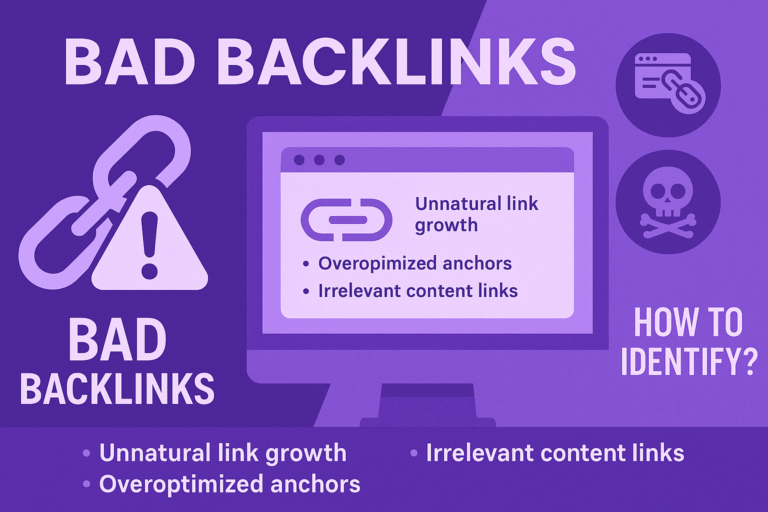Starting with the right seed keywords can revolutionize your keyword research process and open up a world of possibilities for your SEO strategy.
Think of seed keywords as the initial clues in a treasure hunt—the better the clues, the closer you get to discovering gold.
Whether diving into a new market or sprucing up existing content, knowing how to find and leverage these crucial keywords is vital. This isn’t just about attracting traffic; it’s about attracting the right traffic.
With the correct seed keywords, you set the stage for deeper insights, more effective campaigns, and a stronger connection with your audience.
Let’s break down how to uncover these gems and use them to fuel your search engine success.
Finding the right seed keywords, parlaying that into long tail keyword research, and implementing them effectively are vital to a successful SEO campaign. Read on to find out how to do all of that or check out our done-for-you keyword research services.
What Are Seed Keywords?
Seed keywords (also known as short-tail keywords or primary keywords) are the base terms you use to start your keyword research.
They can be seen as fundamental concepts or main subjects representing your brand or the topics covered in your content.
These crucial words form a foundation for a more extensive keyword strategy. Seed keywords enable you to grow and delve into variations, long-tail keywords, and related phrases.
Finding the best seed keywords establishes the path for all that follows, leading your SEO work toward focusing on advantageous search queries.
Why Are Seed Keywords So Important?
When businesses identify and use seed keywords well, they can improve their search engine optimization by ensuring their content matches what people look for and require.
Basis for Comprehensive Keyword Research
Seed keywords assist in creating lists of more comprehensive keywords. It is customary to begin with seed keywords and then expand into more specific and targeted phrases.
These words are vital for starting the process since they provide a basic understanding of what needs to be included while allowing us to branch out into different areas related to these initial concepts.
For instance, starting with “yoga” as a seed keyword could lead us to other terms such as “yoga classes,” “yoga for beginners,” or even just plain old-fashioned mats used during yoga sessions.
This comprehensiveness ensures a focused SEO approach that covers different user intents and boosts the possibility of ranking for a broader range of queries. Finding seed keywords sets the stage for uncovering long-tail keyword ideas that produce leads and revenue, so don’t rush through it.
Insight into Customer Search Behavior
Comprehending what potential customers are looking for and the reasons behind their searches is crucial for any SEO strategy, and seed keywords play a critical part in this.
Studying how keywords are used in search queries can help us gain an essential understanding of customer intentions and behaviors. For example, a person searching “buy yoga mat” may be at a different point in the purchase journey than someone who searches “yoga mat reviews.”
By finding and studying seed keywords, businesses can create content targeting users at the correct point in their journey, such as when they gather information or prepare to buy.
This boosts the chances of being seen in search results and meeting potential customers’ requirements better. The planned use of keywords is beneficial for increasing site visits and improving the quality, which can result in more customer interactions and conversions.
How to Analyze Seed Keywords
Analyzing keyword opportunities is crucial for optimizing your SEO strategy effectively. Here are the key metrics to consider:
Search Volume
This metric indicates the number of searches for a keyword within a specific time frame, typically a month. A higher search volume suggests a greater interest in the keyword, which may correlate with higher competition. Generally, seed keywords have a high search volume relative to bottom-of-funnel terms.
Competition
Understanding the competitive landscape for a seed keyword is essential. Evaluate how difficult it will be to rank for a keyword. Keywords with lower competition are generally more achievable targets, making them particularly attractive for SEO strategies.
Relevance
This metric assesses how closely a keyword relates to your content and business objectives. A high relevance score means the keyword aligns well with your website’s subject matter or the products/services you offer, making it a valuable addition to your keyword strategy.
Remembering these will help you find the right seed keywords as you begin the keyword research process.
How To Find Seed Keywords
Identifying seed keywords is essential when planning SEO, as they are the foundation of any strategy.
These initial keywords serve as the cornerstone for broader keyword research and help determine the type of content necessary for your website or business.
They provide a starting framework for expanded keyword research, shaping the kinds of content your website or business needs to achieve visibility on search engine results pages (SERPs).
Brainstorm A Basic Seed Keyword Related to Your Business
To find seed keywords for your website, begin with a brainstorming session. Concentrate on the core products, services, and niche of your business.
For example, if you have a gym, think about terms like “fitness.” If it’s a café, consider phrases such as “coffee shops.” Consider how your customers would search for your services or products. This method aids in creating an initial collection of potential seed keywords that match closely with the main emphasis of your business.
Analyze Top Competitors’ Keyword Strategies
Another suitable method to improve your list of seed keywords is by observing what competitors are doing.
Checking your rivals’ keyword strategies can give you useful information and help you discover extra keywords that they might be using for success. Observe closely the keywords they focus on, as this could give hints about market changes and customer likes.
Look at Their Meta Tags and Content
Exploring your rivals’ websites and looking at their meta tags, especially the title tag and meta description, as well as their content, is a very revealing method.
These elements usually have seed words optimized to attract search engine traffic. If you can figure out which keywords your competitors consider important enough to put in these crucial SEO parts, you will be able to find good keywords for your strategy.
Use Competitive Analysis Tools
Use competitive analysis tools to simplify and enhance your competitive keyword research. Tools such as SpyFu can help you understand the keywords your rivals are ranking for, including those they are emphasizing in their SEO strategies.
These tools also assist you in noticing patterns and similarities among keywords frequently used within your field.
Utilize A Keyword Research Tool
-
Google Keyword Planner
Google Keyword Planner is a basic tool for uncovering seed keywords. To use it, start by entering primary words related to your business into the planner.
The planner will display the search volume of these terms and suggest other similar keywords that might work.
-
Google Search Console
If you have a more established site, you may already have some valuable broad keywords within your content that you are not yet ranking for.
Look at “Queries” in Google Search Console and export the terms ranking in position 50+. These are often broad terms that a more narrow service page has picked up but require a separate page to rank.
-
SEMrush or Ahrefs for Broader Insights
SEMrush or Ahrefs are invaluable as they allow for detailed keyword performance analysis, including search volume, ranking difficulty, and potential traffic they could drive to your site.
Use these tools to expand your seed keyword list with high-potential keywords. By carefully selecting and refining these keywords, you ensure that subsequent efforts are targeted and effective, leading to better search engine rankings and increased relevant traffic to your website.
Expanding Your Keyword List
To be effective, your seed keywords must be narrowed to uncover their long-tail counterparts, which have a clear search intent. Here is how to start exposing them.
Input Seed Keywords into Research Tools
The expansion process starts when you enter your seed keywords into a keyword research tool.
These instruments make a broader inventory of related terms and phrases that are possibly overlooked by using your initial keywords. This is carried out by studying details on search trends, traffic, and associated searches that have a thematic or semantic relation with the seeds given.
Explore ‘Related Keywords’ Features
This attribute is very beneficial because it provides extra keywords using automation to determine similarities and relevance with your seed keywords.
It assists in discovering variations and derivatives of your main terms, which could attract other traffic sections that might not be covered by the initial set of keywords you entered.
Consider the Search Intent
Comprehending and sorting the search intent of your keywords is required to modify your content in a manner that suits users’ requirements. Keywords usually fall under three types of search intents:
1. Informational Queries
These are utilized by users who seek information or need answers to queries. For instance, keywords such as “how to prepare a cake” and “what does SEO mean” indicate informational intent.
2. Navigational Queries
These are queries made when a user wants to reach a certain website or page. For example, someone may search for “Facebook login” or “Amazon customer service,” showing they know where they wish to navigate.
3. Transactional Queries
We observe this intention when users show readiness to buy or be involved in a transaction. Transactional intent is demonstrated by keywords like “buy running shoes online” or “best deals on laptops.”
Leveraging Seed Keywords in Content
Using seed keyword phrases correctly can significantly affect how often search engines rank your website and bring in visitors.
-
Integrate Seed Keywords in Titles and Headers
Titles and headers are some of the initial things that search engines assess when they look at a web page, so having your seed keywords included here can make a big difference to how well you do in SEO.
-
Develop Pillar Pages and Supporting Blog Posts
Pillar pages are like big containers; they gather all the essential information about a topic. Supporting blog posts can be seen as smaller cups that explore specific parts of this topic in more detail.
You should start by finding a seed keyword with abundant content potential and use it to create your pillar page. This page must give an extensive introduction about the subject and contain links to smaller but detailed blog posts, each aiming at one subset.
For instance, if your seed keyword is “organic gardening,” you may create a pillar page called “The Full Manual for Organic Gardening.” Supportive posts like “Selecting Organic Fertilizers” and “Top Organic Gardening Techniques” can link to it.
Every single one of those posts would target related keywords, encouraging targeted traffic to visit the main page.
Best Practices for Seed Keywords
To find seed keywords that equate to an ROI for your time and efforts, you must discover terms that support your overall business goals – and speak to your customers in their language.
Strategic Alignment
Begin by ensuring that your seed keywords align with your core offerings. This isn’t just about matching keywords with products or services but about embedding these keywords into your brand’s narrative.
Think about how these keywords reflect your business’s solutions and the unique value propositions that differentiate you in the market.
Audience Insight
Develop a deep understanding of your target audience’s interests, pain points, and informational needs. Use this knowledge to craft seed keywords that resonate with your audience and address their specific concerns or curiosities.
For example, if your audience frequently asks about “sustainable materials” in your industry, consider incorporating this as a seed keyword in your content about product materials.
Content Themes
Employ seed keywords to develop broader content themes or series. This can help organize your content into clusters that address various facets of a core topic, enhancing the user’s journey through your website.
For instance, a seed keyword like “home automation” can be expanded into themes such as “benefits of home automation,” “home automation for energy efficiency,” and “best home automation gadgets.”
Engagement and Relevance
Create content that uses seed keywords and naturally engages the reader.
This involves crafting headlines that capture interest, using keywords in subheadings to maintain SEO relevance, and weaving keywords seamlessly into the narrative to keep the content organic and reader-friendly.
Problem-Solving Content
Focus on creating content that solves problems using seed keywords. Each piece of content should aim to answer questions or provide solutions directly related to the keywords.
For instance, if “organic gardening tips” is a seed keyword, a blog post titled “10 Essential Tips for Starting Your Organic Garden” can directly address common queries and challenges your audience faces.
Conversion Optimization
To enhance conversion rates, integrate seed keywords into your call-to-action (CTA) messages and landing pages. By aligning the language of your CTAs with the seed keywords, you make the user journey more cohesive and increase the likelihood of conversion.
For example, if “custom yoga mats” is a seed keyword, use it in your promotional materials and CTA like “Design Your Custom Yoga Mat Today!”
Feedback and Adaptation
Collect and analyze feedback on how well your content satisfies user intent and engagement metrics regularly. Use this data to continuously refine your seed keyword strategy and content approach.
This could involve adapting the keywords based on changing audience needs, market trends, or SEO performance metrics.
Avoiding Common Mistakes in Keyword Usage
Seed keywords and long-tail keyword phrases will help you connect with the right audience, but only if you use them correctly.
Here are some common mistakes people make when implementing keywords into their content.
Avoid Keyword Stuffing
Keyword stuffing is a frequent mistake in SEO. It occurs when content contains too many keywords, which are used excessively to control a website’s position on search engine result pages.
It makes content hard to read and affects the site’s overall ranking. These platforms apply complex formulas and algorithms that recognize this behavior and penalize sites accordingly.
Instead of repeating keywords excessively, concentrate on producing effortless, useful, and interesting content that uses keywords naturally.
Use Synonyms and Related Phrases
You can use synonyms and related phrases to improve the readability of your content and avoid the repetitive use of similar keywords.
This makes your content more pleasant and varied for readers and helps improve SEO by following semantic search rules.
Employing a range of related terms boosts the likelihood that your content will match different searches.
Don’t Overlook Long-Tail Keywords
Although focusing on high-volume seed keywords is vital, do not underestimate the value of long-tail keywords. These are more detailed phrases that might have a lesser search volume but generally face less competition and are closely related to specific user intentions.
Including these keywords could improve your chances of attracting organic traffic. These terms often mirror what users need and link to better conversion rates.
Don’t Forget To Prioritize All Stages of the Buyer’s Journey
When deciding on keywords, consider every step of the buyer’s journey. Selecting and using keywords should cover all stages, from making people aware to considering options until they decide.
Creating content that aligns with potential buyers at each phase guarantees a more thorough method in your digital marketing and SEO attempts.
This implies incorporating broad, informative keywords for individuals in the awareness phase, more detailed phrases for the consideration stage, and precise, often transactional terms for users who are prepared to buy.
Need Help With Keyword Research?
While this post covered a lot about seed keywords, it is far from everything you need to know to conduct comprehensive keyword research and seamlessly integrate it into your content strategy.
At Stellar SEO, we have provided keyword research services as a core part of our holistic custom SEO campaigns for over a decade.
If you want to accelerate the keyword research process, don’t hesitate to contact us today.
















